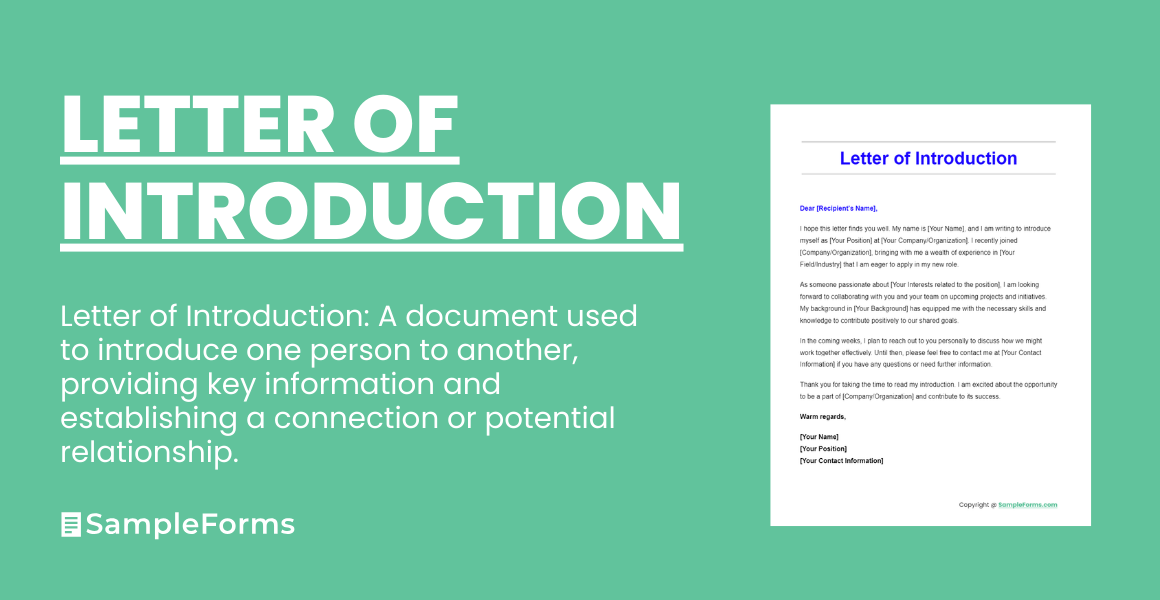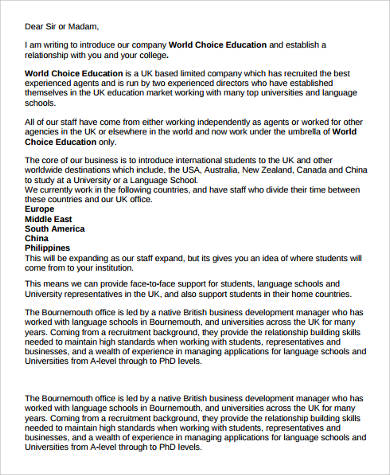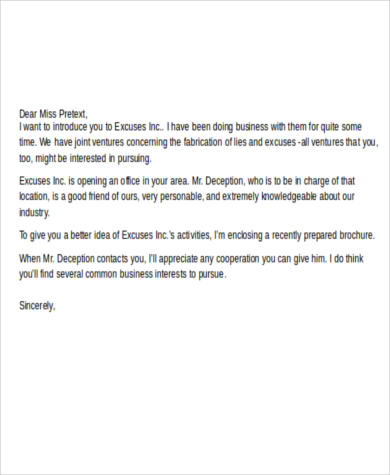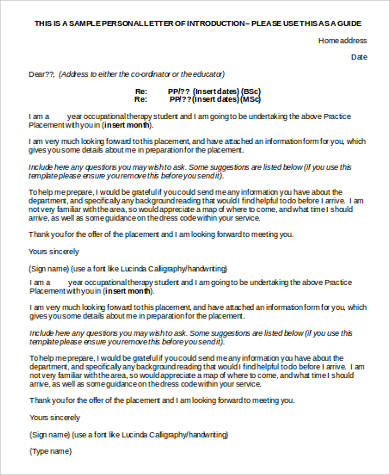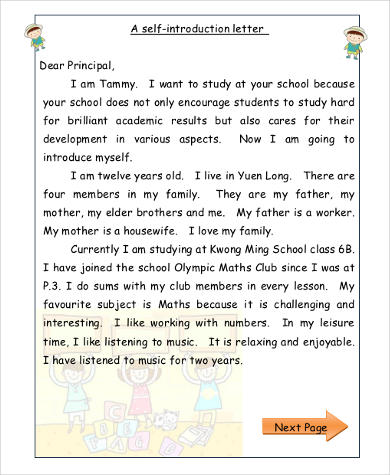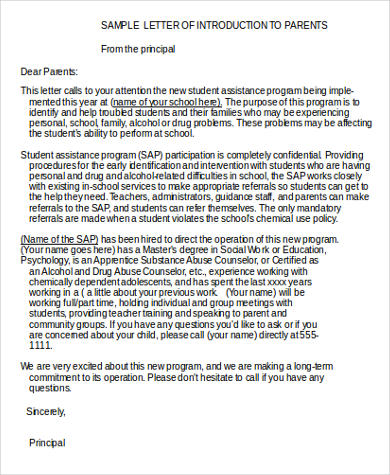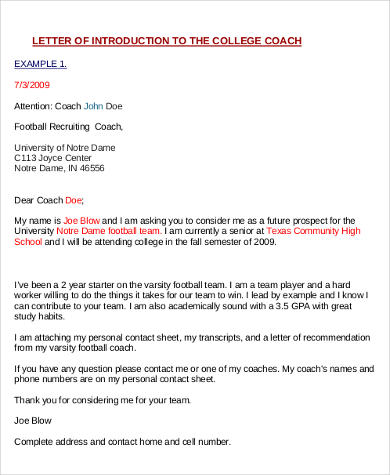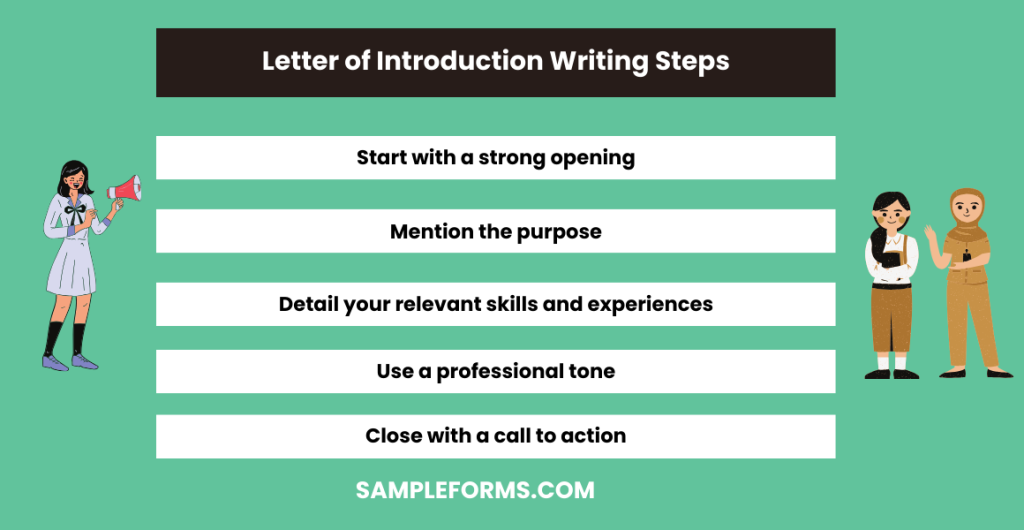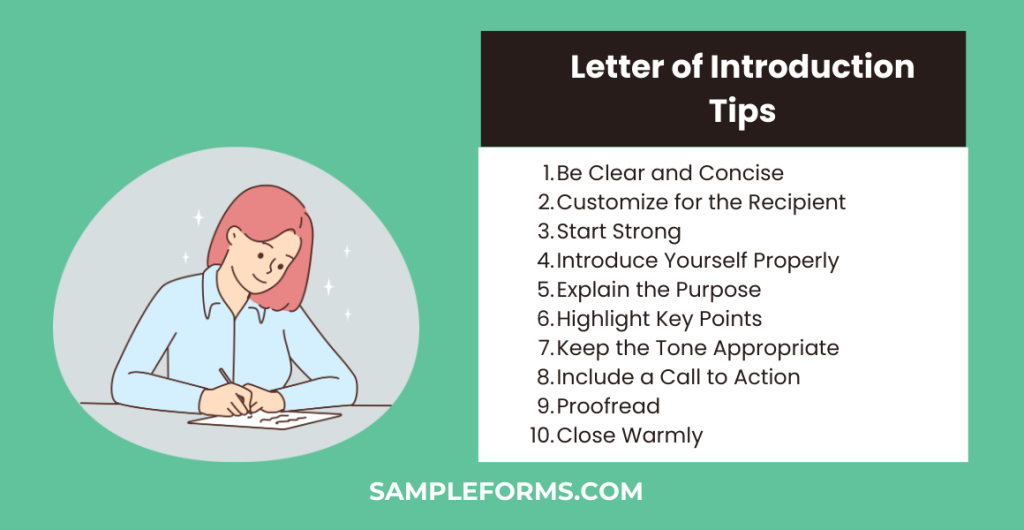Dive into the essential toolkit for crafting the perfect Letter of Introduction. This complete guide is packed with expert advice, practical tips, and illustrative examples to ensure your introduction stands out. Whether it’s for networking, job seeking, or academic purposes, we cover everything from crafting a compelling narrative to securing a Formal Letter. Boost your professional and personal connections today with our insightful strategies and Sample Letter resources.
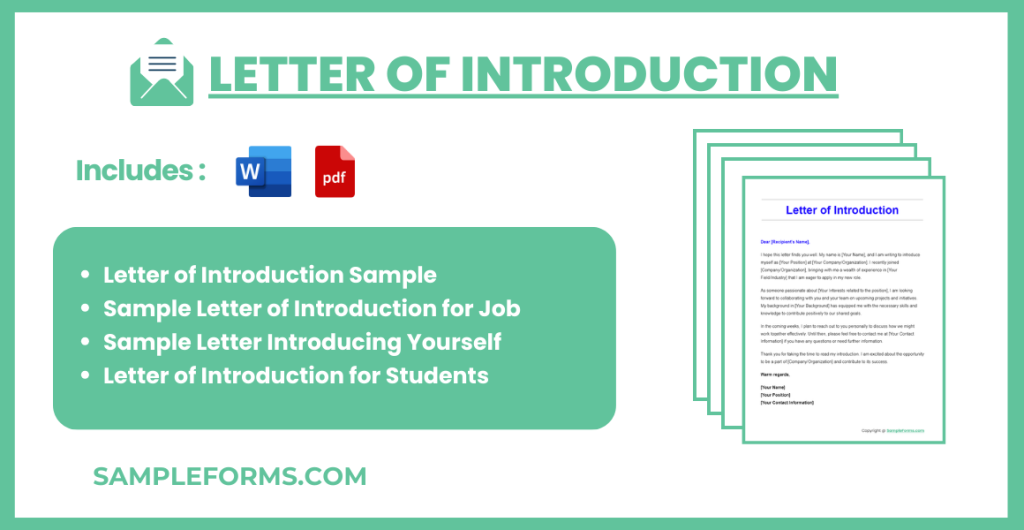
Download Letter of Introduction Bundle
What is Letter of Introduction?
A Letter of Introduction serves as a bridge for making new connections. It’s a personal or professional document designed to introduce the sender to a specific audience or individual, highlighting their intentions, qualifications, or reasons for reaching out. This letter paves the way for future interactions, engagements, or collaborations, making it a key tool in networking, job applications, and more. Whether you’re seeking a job, exploring academic opportunities, or expanding your professional network, a well-crafted introduction can set the tone for a valuable relationship.
Letter of Introduction Format
Heading
- Date: Include the current date at the top of your letter.
- Recipient’s Information: Provide the name, title, organization, and address of the person you are writing to.
- Greeting: Use a professional salutation, such as “Dear [Recipient’s Name],”
Introduction
- Opening Statement: Briefly introduce yourself and state the purpose of your letter.
- Background Information: Offer a concise background about yourself or the person you are introducing. Highlight relevant qualifications, experience, or interests.
Body
- Details of Purpose: Elaborate on why you are writing the letter. Provide specific information about your request, proposal, or the reason for the introduction.
- Connection: Mention any mutual contacts or shared interests to establish a connection with the recipient.
Conclusion
- Call to Action: Indicate what you hope will happen next, such as a meeting, a follow-up call, or any specific action you wish the recipient to take.
- Thank You: Express appreciation for the recipient’s time and consideration.
- Closing: End with a professional closing, such as “Sincerely,” “Best regards,” followed by your name and contact information.
Letter of Introduction Sample

Discover the perfect blueprint with our Letter of Introduction Sample. Seamlessly blend professionalism with personal touch, ideal for crafting a Letter of Consent that makes an unforgettable first impression.
Sample Letter of Introduction for Job
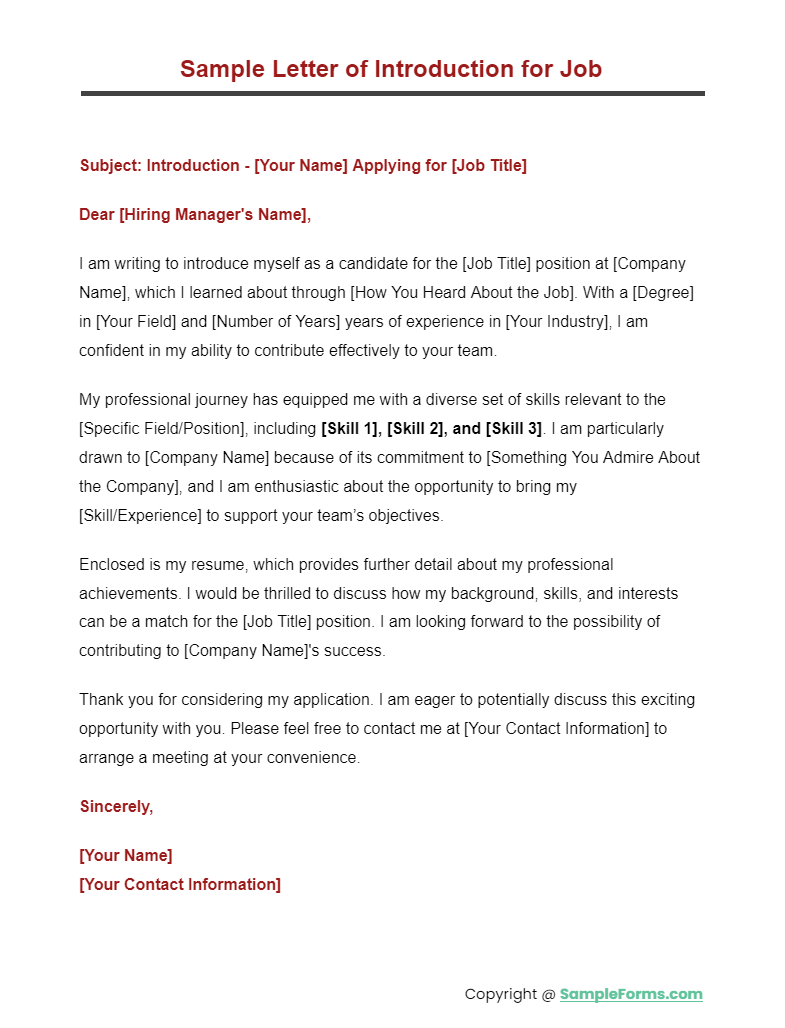
Navigate your career path with our Sample Letter of Introduction for Job. Incorporate elements of a Letter of Application Form to showcase your skills and intentions in a compelling manner.
Sample Letter Introducing Yourself
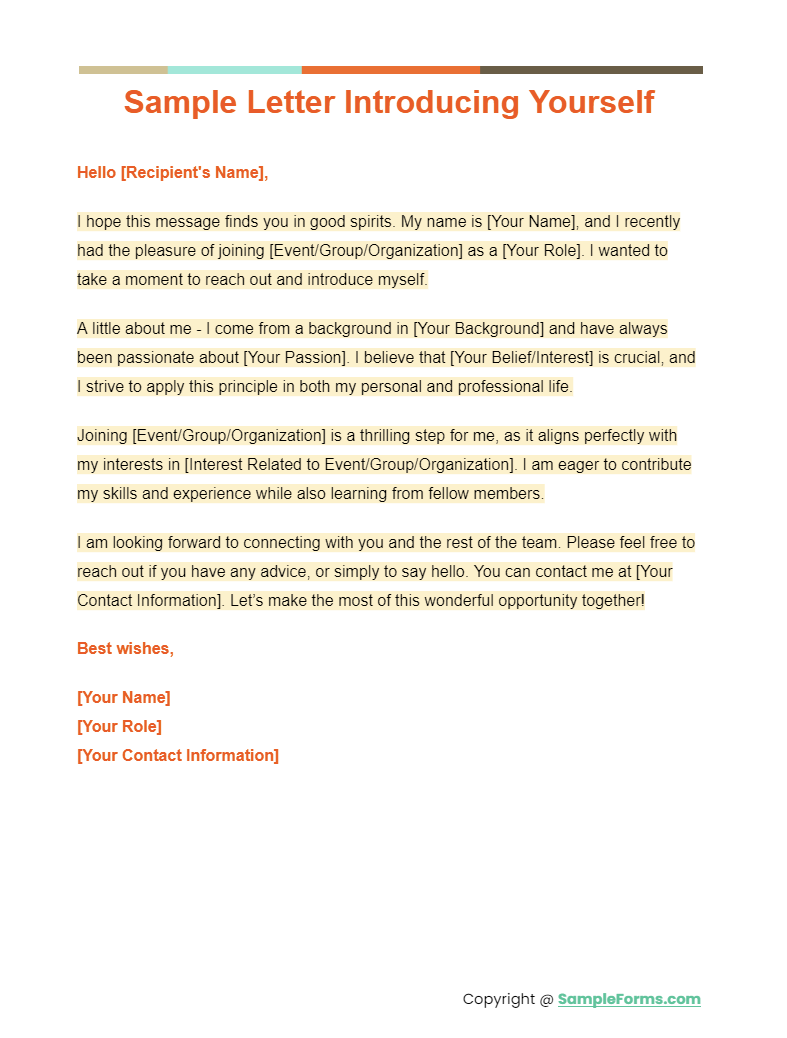
Craft an engaging narrative with our Sample Letter Introducing Yourself. Utilize the nuances of an Authorization Letter to grant readers a glimpse into your professional persona and potential contributions.
Letter of Introduction for Students
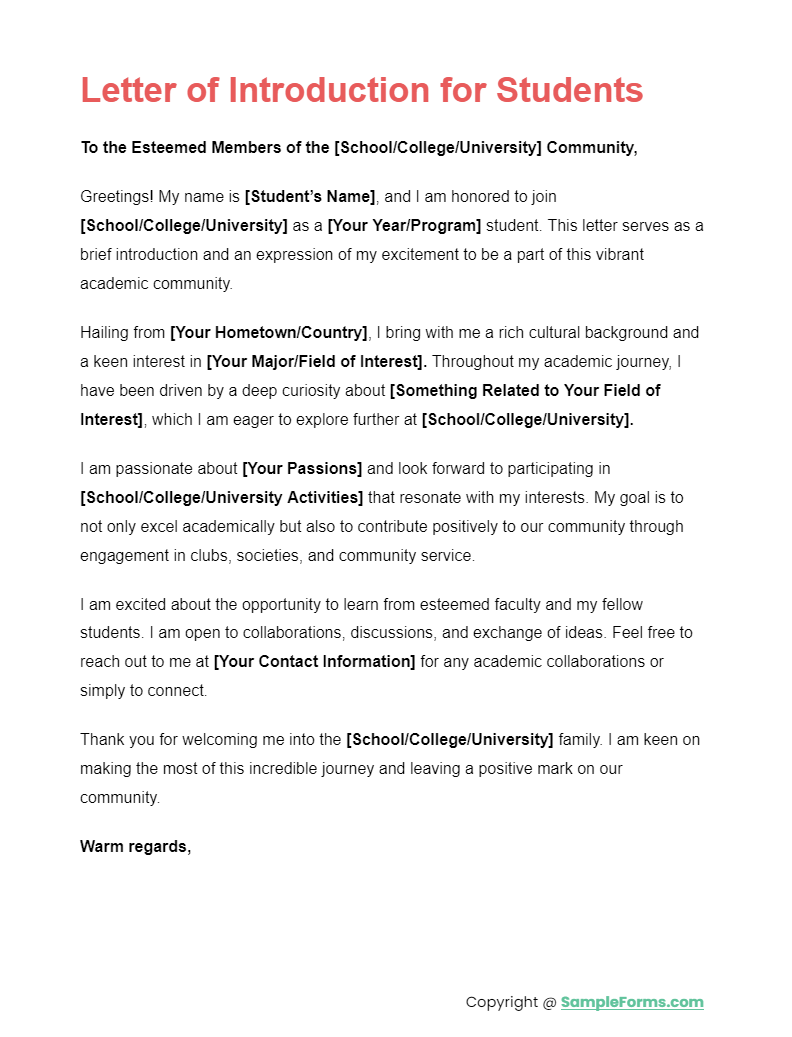
Empower students with our Letter of Introduction for Students. Integrate the supportive tone of a Teacher Cover Letter and the clarity of a Reference Letter to highlight their achievements and aspirations.
By strategically employing the unique attributes of each document type — from the HR Letter to the Letter of Intent — these samples provide a comprehensive toolkit for effective personal and professional introductions.
More Letter of Introduction Samples
Business Letter of Introduction Sample
Company Letter of Introduction
Personal Letter of Introduction
Letter of Self Introduction in PDF
Printable Letter of Introduction for Resume
Example Letter of Introduction to Parents
Sample College Letter of Introduction
What is a Letter of Introduction for Job Application?
A Letter of Introduction for a job application is a document that accompanies your resume, highlighting your enthusiasm and fit for the position. Unlike a Job Recommendation Letter, this self-presentation tool elaborates on your skills, experiences, and the unique qualities that make you the ideal candidate. It’s an opportunity to connect your background to the job’s requirements and express your interest in the company.
How to Write a Letter of Introduction?
Writing a Letter of Introduction involves a few crucial steps:
- Start with a strong opening that captures attention.
- Mention the purpose of your letter early on, aligning it with a Letter of Interest.
- Detail your relevant skills and experiences, linking them to the needs of the position.
- Use a professional tone, akin to crafting a Resignation Letter, to maintain formality and respect.
- Close with a call to action, expressing your eagerness for a follow-up, similar to a Thank You Letter After Interview.
How do You Write an Informal Introduction Letter?
An informal introduction letter still requires a structure but allows for a more personal tone. Here’s how:
- Begin with a friendly greeting.
- Share your connection to the recipient or the reason for your introduction in a conversational manner.
- Highlight personal interests or experiences that relate to the recipient or the context of the introduction.
- Conclude with a casual sign-off, offering further contact or a meeting. You should also take a look at our Recommendation Letter for a Friend.
What are the 5 Elements of a Good Introduction?
- Attention-Grabbing Opening: Just as in a College Recommendation Letter, start with a compelling hook.
- Purpose Statement: Clearly state why you are writing, similar to the clarity expected in an Appeal Letter Format.
- Relevant Background Information: Share pertinent details about yourself, as seen in Reference Letter.
- Connection to the Audience: Make it clear why your introduction matters to the recipient, akin to a Teacher Appreciation Letter.
- Thesis or Main Idea: Conclude the introduction by succinctly presenting the main idea or the goal of your letter.
How Does an Introduction Letter Look Like?
An introduction letter starts with your contact information, followed by the date and the recipient’s details. Open with a formal greeting, then move into the body of the letter, which includes the introduction, the purpose of your letter, and a brief overview of why you’re reaching out. Incorporate elements that show your understanding of the recipient’s needs or your appreciation for their work, as seen in Recommendation Letter for Student Close with a professional sign-off and your signature.
Letter of Introduction Tips
- Be Clear and Concise: Aim for brevity and clarity, ensuring your message is understood at first glance.
- Customize for the Recipient: Tailor your letter to address the specific interests and needs of the recipient, making it personally relevant.
- Start Strong: Begin with a compelling opening line to grab the recipient’s attention immediately.
- Introduce Yourself Properly: Clearly state who you are and any mutual connections or relevant background information.
- Explain the Purpose: Be explicit about why you’re reaching out and what you hope to achieve with the introduction.
- Highlight Key Points: Focus on the most important information or achievements that make you or the person you’re introducing stand out.
- Keep the Tone Appropriate: Match the tone of your letter to the context and relationship—professional for business, more relaxed for personal introductions.
- Include a Call to Action: Encourage the recipient to take a specific action, such as responding to the letter or setting up a meeting.
- Proofread: Eliminate errors by carefully reviewing your letter, ensuring it’s polished and professional.
- Close Warmly: End your letter on a positive note, with a warm closing that invites further communication.
Can you Fail a Pre Employment Physical for being Overweight?
Failing a pre-employment physical due to weight is rare, focusing instead on job-related health requirements. Tailor your approach like crafting a Farewell Letter, focusing on fit and readiness.
What is Usually Included in an Annual Physical Exam?
An annual physical exam typically includes checks on vital signs, blood tests, and screenings tailored to age and gender, akin to detailing qualifications in an Example Cover Letter.
What do you Wear to Pre Employment Paperwork?
For pre-employment paperwork, opt for smart casual attire, mirroring the professionalism of an Internship Recommendation Letter, to make a positive impression.
What Does a Pre-employment Physical consist of?
A pre-employment physical may include health history review, physical examination, and possibly drug and alcohol testing, ensuring candidates meet the criteria as outlined in an Offer Letter.
Where can I get a Pre Employment Physical Form?
Pre-employment physical forms are often provided by the employer or can be downloaded from company websites, similar to seeking a Letter of Reference for clarity on qualifications.
How to Get a Pre-employment Physical?
To get a pre-employment physical, schedule an appointment with a healthcare provider, following the process as you would when seeking a Student Recommendation Letter for a focused assessment.
Related Posts
-
Security Deposit Return Letter
-
FREE 5+ Fraternity Recommendation Letters in PDF
-
Audit Response Letter
-
Medical School Recommendation Letter
-
Law School Recommendation Letter
-
FREE 9+ Paralegal Recommendation Letters in PDF | MS Word
-
FREE 9+ Professional Recommendation Letters in PDF | MS Word
-
FREE 5+ Employment Resignation Letters in PDF
-
Official Resignation Letter
-
Character Reference Letter for Immigration
-
Job Recommendation Letter
-
Tenant Recommendation Letter
